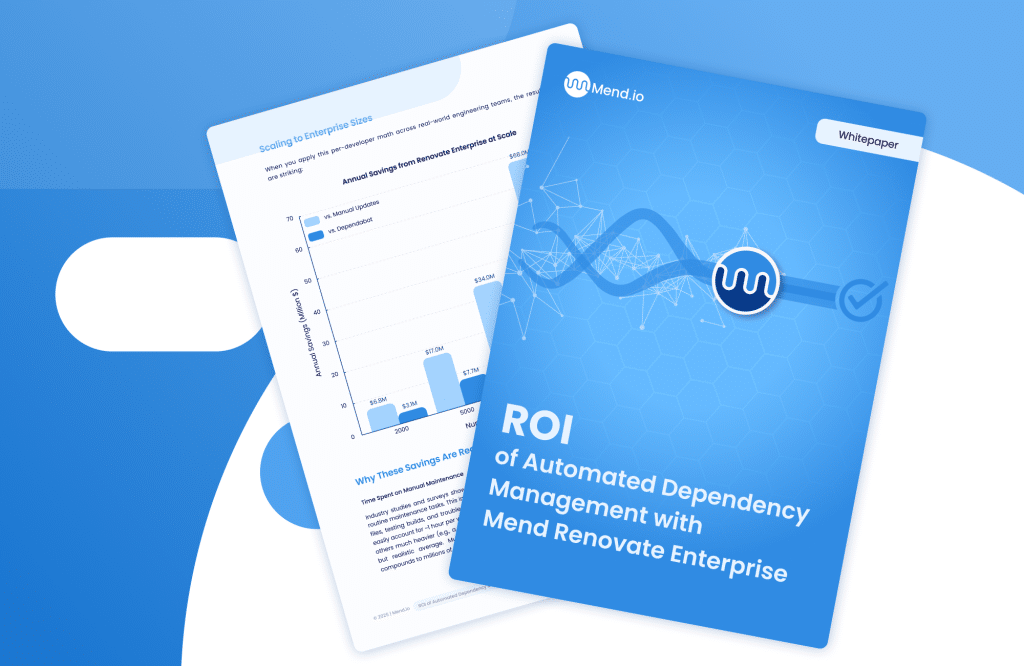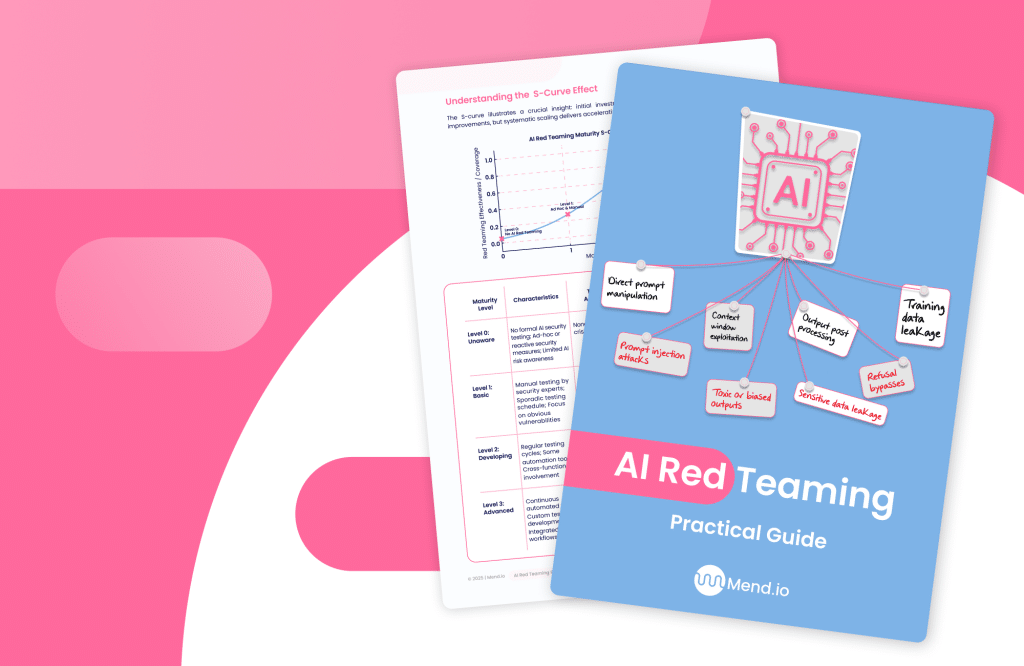Table of contents
What Is Application Security Posture Management (ASPM)?

Application security posture management (ASPM) centralizes and automates the monitoring, evaluation, and management of application security across an organization’s software lifecycle. ASPM provides a unified view of the risk posture by aggregating data from various security tools, such as static application security testing (SAST), dynamic application security testing (DAST), software composition analysis (SCA), and runtime protection solutions.
The primary goal of ASPM is to contextualize and prioritize vulnerabilities based on risk, application criticality, and threat intelligence. Instead of addressing security alerts in isolation, ASPM platforms correlate findings across tools and environments, enabling teams to understand which issues truly matter. This helps reduce alert fatigue and focus remediation efforts on the most impactful vulnerabilities. This article is part of a series of articles about application security.
Why is ASPM important?
As organizations accelerate their software development efforts to deliver digital experiences, they face increasing pressure to secure complex, distributed applications. Traditional security practices often struggle to keep up with fast-paced DevOps cycles, evolving cloud environments, and the growing software supply chain risks. Application security posture management (ASPM) helps bridge this gap.
ASPM supports modern development by enabling proactive, continuous assessment of security across the software development lifecycle. It helps identify, triage, and prioritize vulnerabilities as they arise, allowing organizations to respond quickly. This is essential in a dynamic threat landscape where application architectures are composed of microservices, APIs, containers, and third-party code.
ASPM aggregates insights from disconnected security systems to create a unified risk picture. This consolidation reduces alert overload and makes it easier for development and security teams to collaborate and focus on what matters most.
Beyond operational efficiency, ASPM is increasingly important for meeting regulatory and compliance requirements. With data protection mandates becoming stricter, organizations need to prove they are actively managing risks and securing their applications.
What are the benefits of ASPM?
By consolidating and contextualizing security data across tools and stages of development, ASPM provides value to both security and development teams:
- Centralized risk visibility: ASPM platforms integrate findings from multiple sources, giving teams a single view of application security posture across the organization.
- Risk-based prioritization: By contextualizing vulnerabilities with business impact, asset criticality, and threat intelligence, ASPM helps focus remediation efforts on the most significant risks.
- Reduced alert fatigue: Aggregating and correlating alerts across tools helps eliminate noise, enabling teams to focus on actionable issues instead of being overwhelmed by false positives or low-priority warnings.
- Faster remediation cycles: Simplified workflows and contextual insights empower developers and security teams to identify and fix issues earlier in the software development lifecycle.
- Improved DevSecOps alignment: ASPM supports better collaboration between security and engineering teams by embedding security checks and insights into the development pipeline.
- Enhanced compliance reporting: With centralized logging and analytics, ASPM simplifies the generation of reports and evidence needed for audits and regulatory compliance.
- Scalability across environments: ASPM tools work across diverse environments—on-premises, cloud, hybrid—and adapt to modern architectures like microservices and containers.
How ASPM works
Application security posture management (ASPM) operates by continuously collecting, correlating, and analyzing data from various security and development tools throughout the software development lifecycle (SDLC). Its architecture typically consists of several components working together to centralize visibility and guide remediation:
- Integration with security and development tools: ASPM platforms connect with a broad range of tools including SAST, DAST, SCA, interactive application security testing (IAST), CI/CD systems, cloud security platforms, and issue trackers. These integrations allow ASPM to ingest security findings, development metadata, and contextual information in real time.
- Data normalization and correlation: Once collected, data from different tools is normalized into a common format and correlated across sources. For example, a vulnerability reported by both SAST and DAST can be grouped as a single issue. ASPM also enriches this data with metadata such as asset ownership, deployment status, and exploitability to provide better risk context.
- Risk scoring and prioritization: ASPM systems apply risk models that consider factors like CVSS scores, business criticality, exploit intelligence, and compliance impact. This allows teams to rank issues based on potential impact rather than just severity labels from individual tools.
- Workflow orchestration and automation: ASPM integrates with ticketing and collaboration systems to automate the assignment, tracking, and resolution of security issues. It enables security teams to define policies and thresholds for triggering alerts, blocking deployments, or escalating critical risks.
- Dashboards and reporting: Through centralized dashboards, ASPM provides continuous visibility into the security posture of applications. It tracks metrics like open vulnerabilities, remediation timelines, and compliance coverage. Customizable reports help demonstrate progress to stakeholders and meet audit requirements.
- Continuous monitoring: ASPM supports ongoing assessment by monitoring changes in code, configurations, and infrastructure. It detects regressions, new vulnerabilities, and drift from security baselines, ensuring that posture remains aligned with organizational policies as systems evolve.
Key ASPM use cases
Risk-based prioritization
ASPM enables organizations to prioritize security efforts by evaluating vulnerabilities in context. Instead of relying solely on generic severity scores, ASPM platforms incorporate business impact, exploitability, asset criticality, and exposure to assess actual risk. This risk-based approach ensures that teams focus on vulnerabilities most likely to be exploited or cause significant harm.
By correlating findings from multiple sources, ASPM can identify overlapping issues and reduce redundant alerts. It also helps determine whether a vulnerability affects critical services or publicly accessible components, guiding resource allocation toward issues with the highest impact potential.
Application observability
ASPM improves observability by providing a consolidated view of application behavior, code changes, and security posture across environments. By integrating with runtime monitoring and security tools, ASPM helps teams detect anomalous behavior, insecure configurations, or deviations from expected baselines. This level of visibility allows for early identification of emerging risks and supports continuous assurance of application integrity.
ASPM platforms often map security findings to application components, offering detailed insight into where vulnerabilities originate and how they evolve through development and deployment. This granular visibility aids in pinpointing high-risk areas and supports more targeted remediation efforts.
API discovery and security
ASPM platforms often include capabilities for discovering and securing APIs, which are frequently overlooked attack surfaces. By integrating with development pipelines, gateways, and runtime monitoring tools, ASPM can automatically identify exposed APIs—both documented and shadow APIs—and assess their risk.
It analyzes API traffic patterns, authentication methods, and data exposures to detect insecure implementations or misconfigurations. When vulnerabilities are found, ASPM ties them back to the owning teams and code repositories, streamlining investigation and remediation.
Incident response and remediation
During a security incident, ASPM acts as a centralized intelligence hub, providing rapid access to historical and contextual data. It allows security teams to trace vulnerabilities across versions, environments, and dependencies, which accelerates root cause analysis and containment.
ASPM also simplifies remediation by integrating with issue tracking systems and development pipelines. It can automatically generate tickets, assign them to responsible teams, and track progress against predefined SLAs. This structured approach reduces mean time to resolve (MTTR) and supports effective post-incident reviews.
Disaster recovery for AppSec
ASPM supports disaster recovery by maintaining a centralized record of application security posture over time. This includes vulnerability histories, remediation actions, code changes, and configuration states. In the event of a breach or system failure, ASPM provides a clear timeline of events and a snapshot of security status prior to the incident.
This historical visibility is critical for understanding the scope of impact, restoring secure baselines, and ensuring no critical gaps remain. ASPM also helps organizations validate that recovery processes re-establish the intended security posture, supporting compliance and post-incident audits.
ASPM vs. other security technologies
ASPM vs. AST
Application security testing (AST) refers to a category of tools that identify vulnerabilities in application code and behavior. This includes static application security testing (SAST) that scans source code, dynamic application security testing (DAST) that analyzes running applications, and interactive application security testing (IAST) that combines both. While effective at pinpointing issues, these tools operate independently and generate large volumes of findings that lack business context.
ASPM builds on AST by aggregating and correlating findings across different testing tools and environments. Instead of treating each vulnerability report in isolation, ASPM connects related issues, de-duplicates overlapping results, and enriches them with operational and business context. For example, a critical issue identified by both SAST and DAST on a high-value application in production would be prioritized over a low-severity issue on an internal dev tool.
ASPM vs. ASOC
Application security orchestration and correlation (ASOC) platforms are designed to simplify the execution of application security tools and centralize the management of their outputs. They focus on automating scan scheduling, data ingestion, and workflow integration, particularly within CI/CD pipelines. ASOC improves operational efficiency but tends to be limited to orchestrating tests and consolidating scan results.
ASPM expands the scope by including real-time posture assessment, contextual risk analysis, and visibility into runtime environments. While ASOC collects data and organizes it, ASPM interprets it—correlating results across tools, assigning risk scores, and tracking remediation progress. ASPM also integrates with runtime telemetry and configuration management systems, providing a continuous view of application security that persists beyond the development pipeline.
ASPM vs. CASB
Cloud access security brokers (CASBs) serve as control points between users and cloud service providers, enforcing policies around access, data protection, and compliance. CASBs are effective at identifying risky user behavior, monitoring data flows, and managing access to SaaS applications. Their focus is user-centric and primarily aimed at securing data in motion and at rest in cloud environments.
ASPM addresses a different domain, securing the applications themselves. It monitors source code, dependencies, APIs, and deployment configurations for vulnerabilities and weaknesses. ASPM does not govern user access but rather ensures that the applications users interact with are secure by design and resilient against exploitation.
Organizations benefit from using CASB and ASPM in tandem: CASB protects who can access cloud services and how, while ASPM ensures the applications those users access are free from exploitable flaws.
ASPM vs. CSPM
Cloud security posture management (CSPM) tools are intended to identify and remediate misconfigurations in cloud infrastructure. This includes scanning for insecure network settings, improper identity and access controls, and violations of compliance policies. CSPM is critical for reducing infrastructure-level risk in public and hybrid cloud environments. However, CSPM does not inspect application-level code, logic, or third-party dependencies.
ASPM focuses on the software layer—monitoring and managing vulnerabilities in the application stack, from code to APIs to runtime behaviors. It correlates development-time and production-time data to assess the security posture of the application itself.
Together, CSPM and ASPM provide a full-stack security model for cloud-native environments. CSPM secures the cloud infrastructure, while ASPM secures the applications running on it, giving teams holistic visibility and control.
ASPM vs. CNAPP
Cloud-native application protection platforms (CNAPPs) aim to consolidate various cloud security functions into a single platform. This includes capabilities from CSPM, CWPP (cloud workload protection platforms), CIEM (cloud infrastructure entitlement management), and in some cases, aspects of vulnerability management. CNAPPs are well-suited for securing cloud-native environments at scale and provide broad visibility across infrastructure and workloads.
ASPM can be viewed as a specialized pillar within the CNAPP framework. While CNAPPs offer breadth across cloud security, ASPM provides depth in application-level analysis and posture management. ASPM delivers precise insights into application risk by integrating with development tools, runtime protection platforms, and vulnerability databases. It tracks security posture continuously, from build to deployment to production, offering granularity that CNAPPs often lack.
Organizations implementing CNAPPs can benefit from integrating ASPM capabilities to strengthen their application layer defenses, improve vulnerability triage, and ensure development and security teams are aligned on risk priorities.
Considerations when choosing an ASPM solution
When evaluating an ASPM solution, organizations should assess both technical capabilities and alignment with their operational needs. Not all platforms offer the same depth or breadth, so choosing the right tool requires a clear understanding of requirements across development, security, and compliance teams.
ASPM-only vs. platform-based ASPM: Decide whether you need a dedicated ASPM vendor or an ASPM capability integrated into a broader security platform. ASPM-only tools focus on aggregating and correlating findings from multiple external scanners. They’re ideal if you already use various scanning tools and need centralized governance, reporting, and prioritization. However, they don’t perform scanning themselves, so their effectiveness relies on the external tools’ quality. Platform-based ASPM combines scanning, correlation, and remediation workflows within a single solution. This can simplify operations and accelerate fixes, but may limit flexibility if the platform lacks coverage for certain technologies.
Integration coverage: A critical factor is the ASPM platform’s ability to integrate with existing tools across the software development lifecycle. This includes compatibility with SAST, DAST, SCA, IAST, CI/CD platforms, issue trackers, cloud providers, and runtime security tools. Broader integration ensures comprehensive visibility and minimizes gaps in posture assessment.
Contextual risk prioritization: Effective ASPM platforms should go beyond simple aggregation and offer risk scoring based on context. This includes evaluating factors like business impact, deployment status, exploit intelligence, and compliance requirements. Look for platforms that support customizable risk models aligned with the organization’s threat landscape.
Scalability and performance: As applications and environments grow, the ASPM solution must scale accordingly. Consider how well the platform handles high volumes of data, supports distributed systems like microservices and containers, and maintains performance in complex environments. SaaS-based platforms often provide greater scalability and lower maintenance overhead.
Ease of use and developer adoption: Developer experience is key to adoption. ASPM tools should offer intuitive interfaces, clear workflows, and developer-friendly integrations. Features like IDE plugins, inline remediation guidance, and automated ticket creation help simplify remediation and embed security into existing development processes.
Customization and policy management: Choose a platform that allows customization of policies, thresholds, and workflows. This flexibility supports the enforcement of organization-specific security standards and enables tailored responses to different risk scenarios. Granular controls are especially important for aligning ASPM with compliance frameworks.
Reporting and audit readiness: Look for reporting capabilities that support both operational oversight and regulatory compliance. ASPM platforms should offer customizable dashboards, exportable reports, and audit trails. The ability to segment data by team, application, or environment helps meet stakeholder needs and simplifies evidence gathering.
Vendor support and ecosystem: Evaluate the vendor’s support quality, documentation, and roadmap. An active ecosystem—such as frequent product updates, community engagement, and third-party partnerships—can be a strong indicator of long-term viability. Ensure that the vendor provides responsive support and services for onboarding, training, and ongoing optimization.













